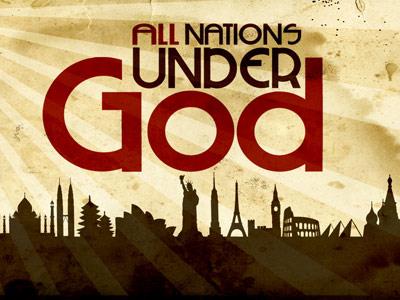-
Pilgrims - Beginning
Contributed by David Leach on Nov 28, 2017 (message contributor)
Summary: The origin of the Pilgrims, who formed the first permanent Colony in America
(The sources for this brief history include: Museum of 17th century Plymouth, The BBC archives, Experience Nottinghamshire, Bassetlaw Museum, The Light and The Glory)
This Pilgrim story begins in 1606 in the small north Nottinghamshire village of Scrooby, population then about 150-200, and now about 300. A group of English Christians, who became "The Pilgrims," formed their own church independent of the national Church of England – these “Separatists” wanted to be free from the form and ritual of the State sponsored Church, to pray individually inspired as opposed to preset prayers, and the right to worship Jesus Christ as head of the Church and not King James I of England.
The principal members of the Scrooby group of Separatists were Richard Clifton, as pastor, John Robinson, as teacher and William Brewster, as the ruling elder. The young William Bradford was also part of the group becoming like a son to the older Brewster. Prior to meeting at Scrooby the group had been holding services at All Saints’ Church, part of the Church of England, in nearby Babworth where Clifton had been the Minister from 1586 until 1606 at which time he lost his job due to the group’s non-conformist beliefs.
William Brewster was the postmaster in Scrooby and lived in the Village’s large Manor House which was the property of the Archbishop of York. The Separatists held their services at the Manor House in Scrooby from 1606 to 1607.
Old Manor House in Scrooby,
© Bassetlaw Museum
As a Church of England property, Scrooby Manor's use as a meeting place for a non-conformist congregation is particularly ironic, not to mention brave. At a time, when such behavior was seen as treasonous, the Separatists were taking a considerable risk to hold their meetings in such a building. Persecution from the government and its Church was matched by hatred from the average Englishman. Because for the majority of people, the State Church was the only source of information about the Separatists, from which an unpleasant picture of arrogance, ignorance and presumed superiority was painted. Earlier in 1593 John Perry, a classmate of Brewster at Cambridge was hanged in London for his role in activities deemed hostile to the established Church.
Persecution by the authorities continued relentlessly. Such was the degree of intolerance that the decision was made in 1607 to leave England for the Netherlands, where Brewster had once spent some time and knew it to be more religiously tolerant. Bradford tells us in English of the day “they could not long continue in any peaceable condition but were hunted and persecuted on every side.” Some of the members found they were watched night and day by the church officers, tormented, imprisoned and “by a joynte consente they resolved to goe into the Low Countries, wher they heard was freedome of Religion for all men.” Initially around 30 individuals from Scrooby were willing to follow Brewster, a few followed later. As no-one was allowed to travel from England without royal permission, the plan was conceived and executed in secret.
After a disastrous false start at Boston in Lincolnshire -- where they were discovered and imprisoned -- and a more successful attempt near Immingham, on the Humber River, the little company was able to emigrate by 1609 to the tolerant haven of the Netherlands. First to Amsterdam and then after about a year to the city of Leiden just north of The Hague. But, twelve years later, the economic situation of the group, who had settled in Leiden, was bleak. The decision was made to move on. Thirty five of the original Scrooby Separatists joined the Mayflower at Plymouth in England and made the arduous crossing to the New World.
Before leaving on the Mayflower an alternative destination had been proposed. Why not go south to Guiana on the coast of South America which Walter Raleigh had so warmly described, it being blessed with a perpetual spring and where the English already had a foothold. But the Leidenites were mature enough Christians to know better than to reason things out with their intellects. The crucial question in all of this was, what was God’s will and where did He want to send them.
As they discerned where they were going, John Robinson and William Brewster focused on why they were going. Robinson perceived that God was calling them to a New Jerusalem, to build His Temple anew – with themselves as its stones. In Robinson’s own words “Now as the people of God in old time were called out of Babylon civil, the place of their bodily bondage, and were to come to Jerusalem and there to build The Lord’s Temple…so are the people of God now to go out of Babylon spiritual to Jerusalem…and to build themselves as Living Stones into a spiritual house, or Temple, for the Lord to dwell in.”

 Sermon Central
Sermon Central



